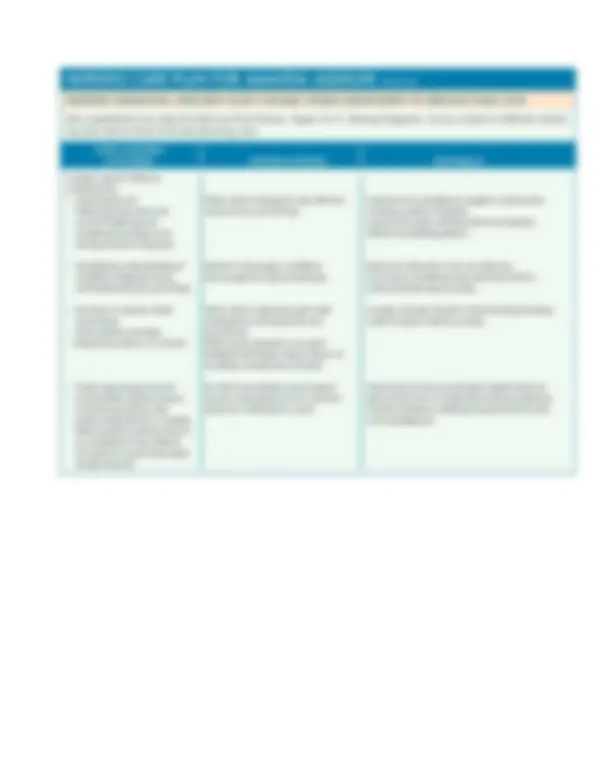



Study with the several resources on Docsity

Earn points by helping other students or get them with a premium plan


Prepare for your exams
Study with the several resources on Docsity

Earn points to download
Earn points by helping other students or get them with a premium plan
Community
Ask the community for help and clear up your study doubts
Discover the best universities in your country according to Docsity users
Free resources
Download our free guides on studying techniques, anxiety management strategies, and thesis advice from Docsity tutors
Knowing and anxiety explanations of treatments and what to expect reduces anxiety. • Voice steady, not shaky procedures. • Respiratory rate of 12–22/min. When ...
Typology: Study notes
1 / 2

This page cannot be seen from the preview
Don't miss anything!


Respiratory Status: Gas Monitor respiratory status q4h: rate, To identify progress toward or deviations exchange [0402], as depth, effort, skin color, mucous from goal. Ineffective Airway Clearance evidenced by membranes, amount and color of leads to poor oxygenation, as evidenced by
Within 48-72 hours
Maintain Fowler’s or semi-Fowler’s Gravity allows for fuller lung expansion position. by decreasing pressure of abdomen on diaphragm.
Administer prescribed analgesics. Controls pleuritic pain by blocking Notify physician if pain not relieved. pain pathways and altering perception of pain, enabling client to increase thoracic expansion. Unrelieved pain may signal impending complication.
Administer oxygen by nasal cannula Supplemental oxygen makes more oxygen as prescribed. Provide portable available to the cells, even though oxygen if client goes off unit less air is being moved by the client, (e.g., for x-ray examination). thereby reducing the work of breathing.
Assist with postural drainage daily at Gravity facilitates movement of secretions
Anxiety control [1402], as evidenced by